Many contemporary luxury watches are inspired by the sleek aesthetics and seductive instrumentation of the automobile and aerospace industries, resulting in endorsement deals with Formula One drivers and marketing campaigns featuring test pilots. Some of the high-tech materials that make sports cars and fighter jets lightweight and aerodynamic are now incorporated into watches.
For many consumer products, there is a correlation between weight and value, a concept manufacturers have, sometimes misleadingly, reinforced. Watchmakers, whose sleek, svelte products have evolved into large, chunky ornaments per current style, have been forced to explore the use of lighter materials. Now the ethereal is being equated with value, and the race to lightness has produced some remarkable products.

Astronaut photo courtesy of NASA; Watch photo courtesy of Roger Dubuis.
Several lightweight watches later, Richard Mille introduced the RM 50-03 McClaren F1 model in 2017, a limited edition of 75 pieces priced at $980,000. At less than 40 grams (including the strap), it became the world’s lightest split-seconds chronograph tourbillon watch. That product introduced a new nanomaterial called graphene (aka Graph TPT) that is 200 times stronger than steel but far lighter. Noting watchmakers’ proclivity to mimic machines on the race track, Adams suggests, “Timepieces are often referred to by modern watchmakers, including Richard Mille, as ‘race cars for the wrist.’”
Lightweight materials like carbon fiber and titanium have been adopted by manufacturers of mass-produced watches, brands such as Citizen and Casio, but luxury watchmakers are consistently pioneering newer, lighter materials. The carbon nano-fibers employed by Richard Mille are similar to what are used for the U.S. Air Force’s stealth bombers, and graphene is being tested by McClaren for its Grand Prix race cars. “I’ve worn many lightweight Richard Mille watches and they’re very cool,” reports Adams. “The irony is that the more lightweight they are, the more difficult it can be to present them as the mega-luxury products their prices suggest,” he adds.
Ariel Adams, whose A Blog to Watch is a leading resource for watch enthusiasts, reports, “Watch brands typically are poor at selling anything new, and thus rely on other products and industries who have already created an appetite for particular materials or themes.” He cites comfort as a prime motivation for reducing weight, stating, “There’s a very real reason why a collector might prefer to wear a watch that’s barely noticeable as opposed to a ‘gold brick on the wrist.’”
Nancy Olson, managing editor at Inter-national Watch (iW) magazine, reports, “It’s all about expanding the limits of development and design to set themselves apart within a somewhat crowded watch market, as well as, in this instance, sturdiness and comfort—particularly in the sport watch arena.” Richard Mille, arguably the trendiest brand in watches, is particularly influential in sport-themed design.
At the French Open in 2010 Richard Mille debuted the RM 027 tourbillon watch, a limited edition designed for tennis superstar and brand ambassador Rafael Nadal. Able to withstand the violent gravitational forces he produces on the clay court, the watch weighs a mere 19 grams (0.670 ounces) with its strap, thanks to a carbon-based composite. The entire movement, crafted from titanium and a high-lithium content alloy — the light yet durable lithium is used in aircraft, rockets and race cars — weighs just 3.83 grams (0.135 ounces).
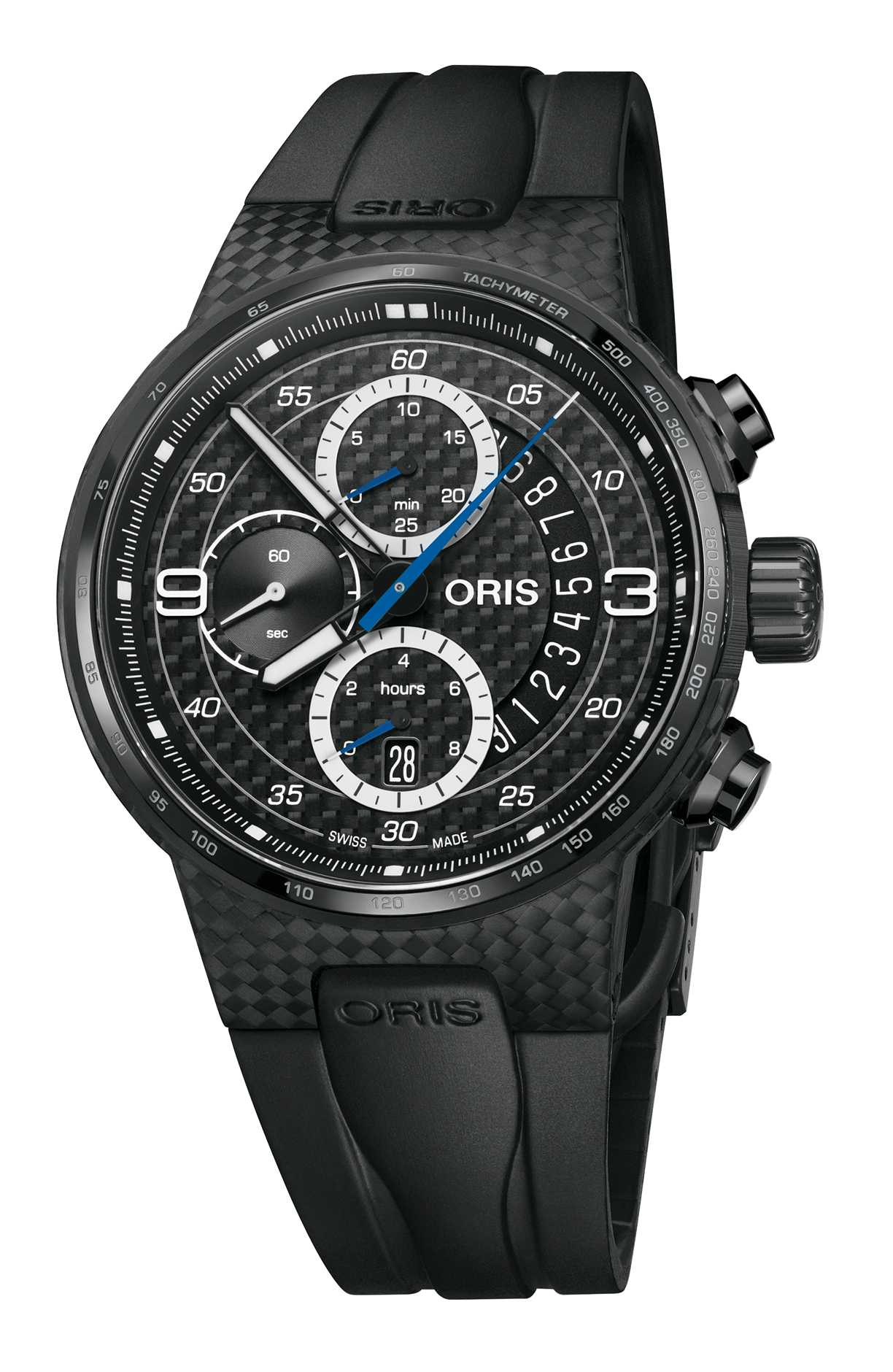
Oris Williams FW41: Limited Edition. Photo courtesy of Oris.
Richard Mille is not the only manufacturer with a connection to auto racing, and the FW41 from Oris is part of a racing-themed collection that celebrated the Williams Team’s 41st season on the Formula One circuit. The total weight of this limited edition watch, comprised largely of carbon fiber and titanium, is not disclosed but the middle case weighs in at only 7.2 grams (0.254 ounces).
Known for capitalizing on trends set by more expensive watchmakers, Oris brings greater accessibility to feather-weight watches, as the FW41 costs approximately $4,350. With its patterned black carbon fiber dial, the FW41 has a dark, sultry aesthetic, reminiscent of the aircraft that share the same materials. Roger Dubuis, which frequently collaborates with iconic racing brands Lamborghini and Pirelli, uses carbon and titanium to lighten its skeleton-style Excalibur Spider watches, both an automatic model and flying tourbillon.
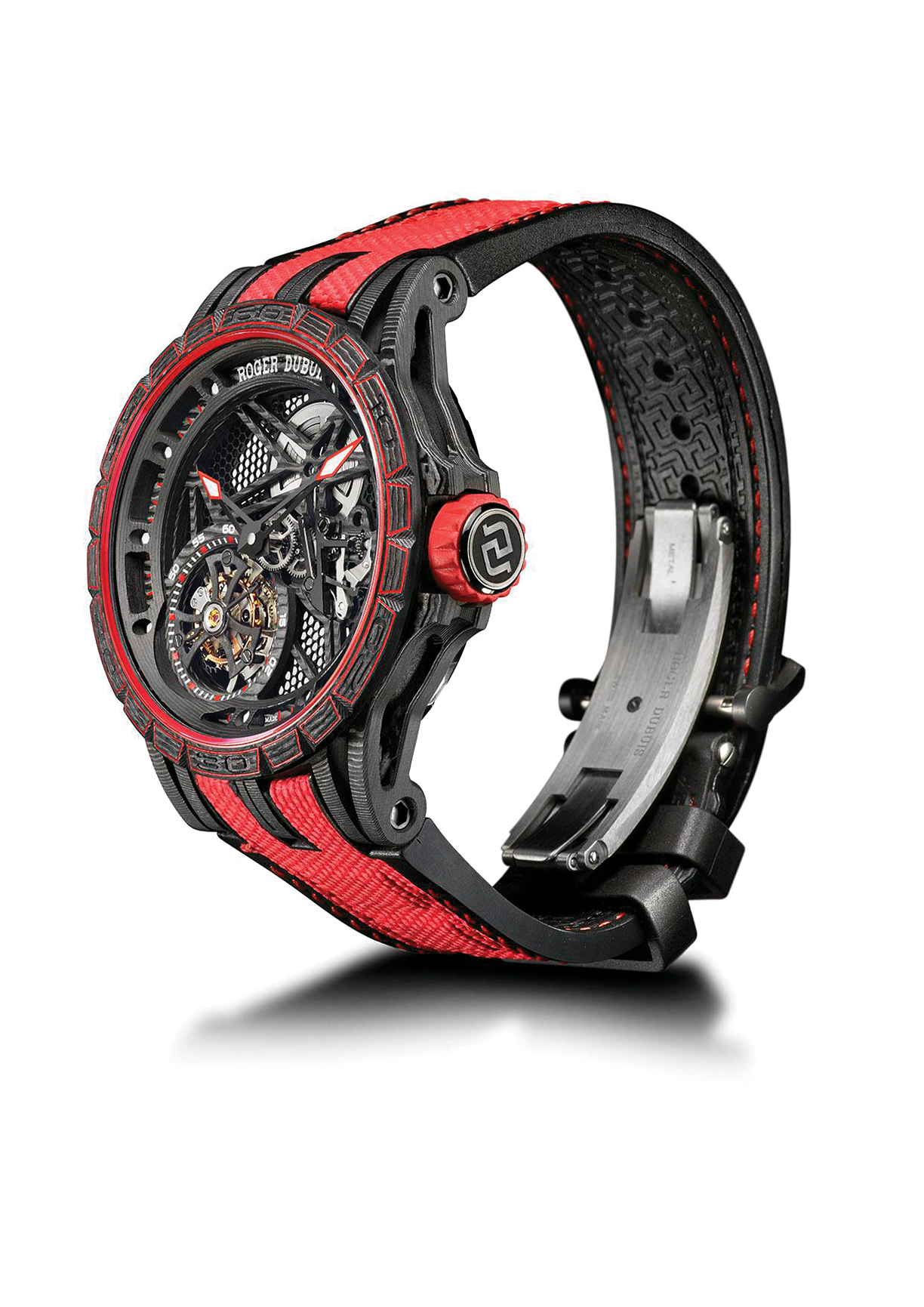
Excalibur Spider Carbon Skeleton: Flying Tourbillon RD509SQ. Photo courtesy of Roger Dubuis.
Montblanc, the legendary German manufacturer of writing instruments, is also a superb watchmaker and in 2016 it released a concept watch, the Time-Walker Pythagore Ultra-Light that weighed in at an extraordinary 14.88 grams (0.525 ounces) sans the strap. Montblanc achieved this lightness through skeletonization and the use of mineral glass, titanium and a Swiss composite material charged with car-bon nanotubes called Innovative Technical Revolutionary Resin.
For those who value a thin profile even more than lightness, the crown would go to Bulgari, which at Baselworld 2019 — the celebrated timepiece/jewelry exhibition held in Switzerland every spring — debuted the thinnest automatic wristwatch in the world. The venerable Italian brand has long specialized in ultra-thin watches and with a 3.3mm movement housed in a case just 6.9mm thick, Bulgari’s razor-thin Octo Finissimo Chronograph GMT is the company’s latest achievement in condensing complex mechanisms.
Ariel Adams cautions that thin watch engineering differs from lightweight watch engineering in significant ways. “Thin watches tend to be a lot more diffcult to make because you aren’t just working with materials but also tolerances and moving parts that need to go next to one another,” he explains. While the Octo Finis simo secures a new title for Bulgari, Piaget (another specialist in slender timepieces) holds the record for mechanical watches. “While thin watches can also be lightweight, appreciating the effort that’s required to make them is an entirely different discussion,” insists Adams.
Nancy Olson, who professionally observes the often-fickle trends in watch-making, does not dismiss the flight-to-light or thin-is-in movements. “A trend always leaves something behind, even when the expression of it evolves,” she states, adding, “Every milestone in watchmaking changes the whole in some way.”
Light & Lean
Bulgari- www.bulgari.com
Montblanc- www.montblanc.com
Oris- www.oris.ch
Piaget- www.piaget.com
Richard Mille- www.richardmille.com
Roger Dubuis- www.rogerdubuis.com
Resources
A Blog to Watch- www.ablogtowatch.com
International Watch- iwmagazine.com
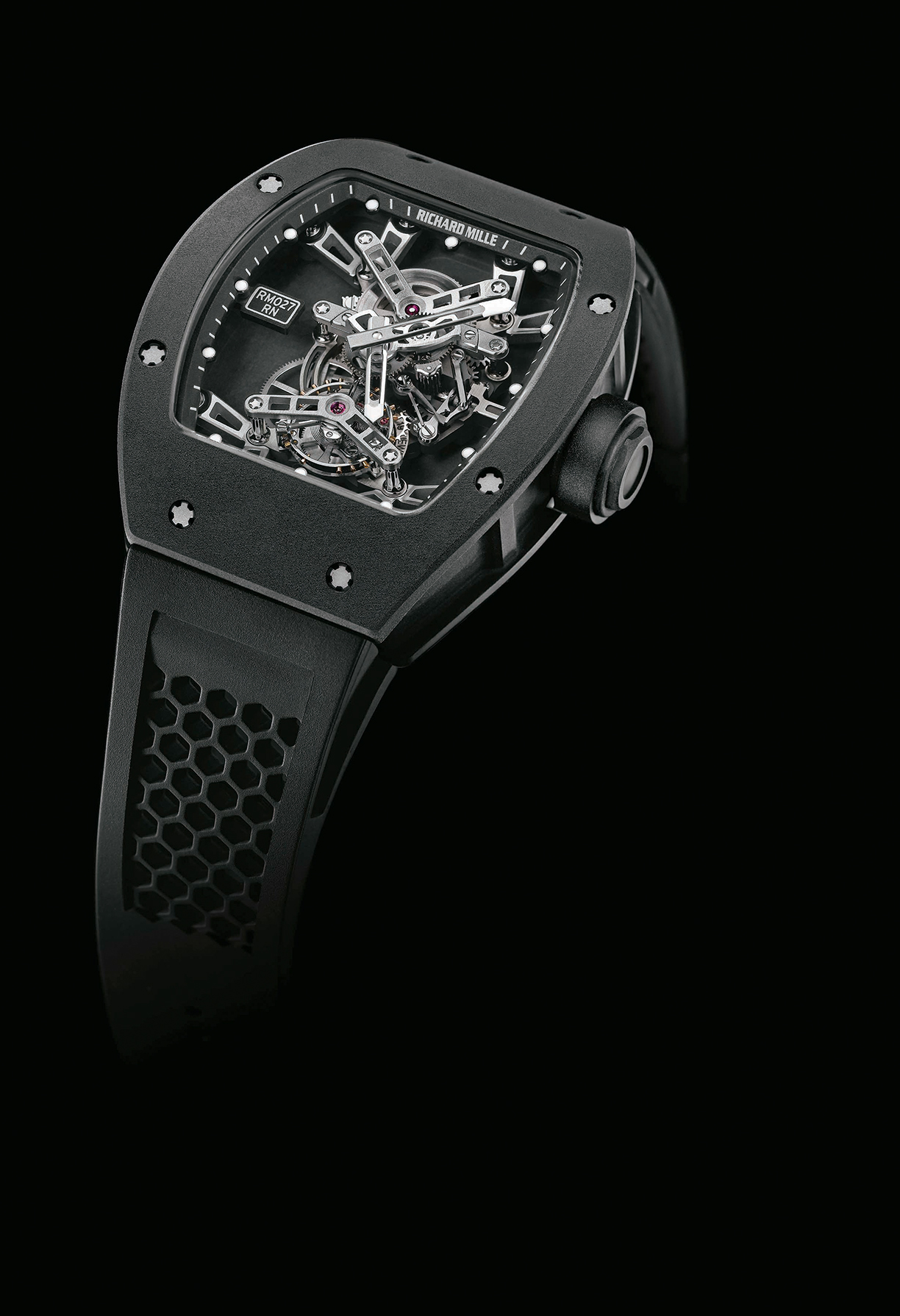
Richard Mille RM 027 Tourbillon – Rafael Nadal.
Photo courtesy of Richard Mille.

The Run To Ibiza
Roger Dubuis has created “The Run To…,” a series of extraordinary supercar adventures, with the signature drive concluding at the Monaco Grand Prix. Participants pass through unrivaled natural beauty in the world’s finest automobiles, enhanced with fine cuisine, lavish accommodations and world-class entertainment. The glamour of these journeys fuel the company’s inspired watchmaking. Photo courtesy of The Good Life Inc.
The new Ombré finish for kitchen and bath faucets from Kohler uses an innovative technique that melds two vibrant metal finishes together to render a subtle but striking transition from light to dark.
Kohler has taken a familiar product and, inspired by the worlds of fashion and modern design, created an uncommon showpiece that is unlike anything else on the market.
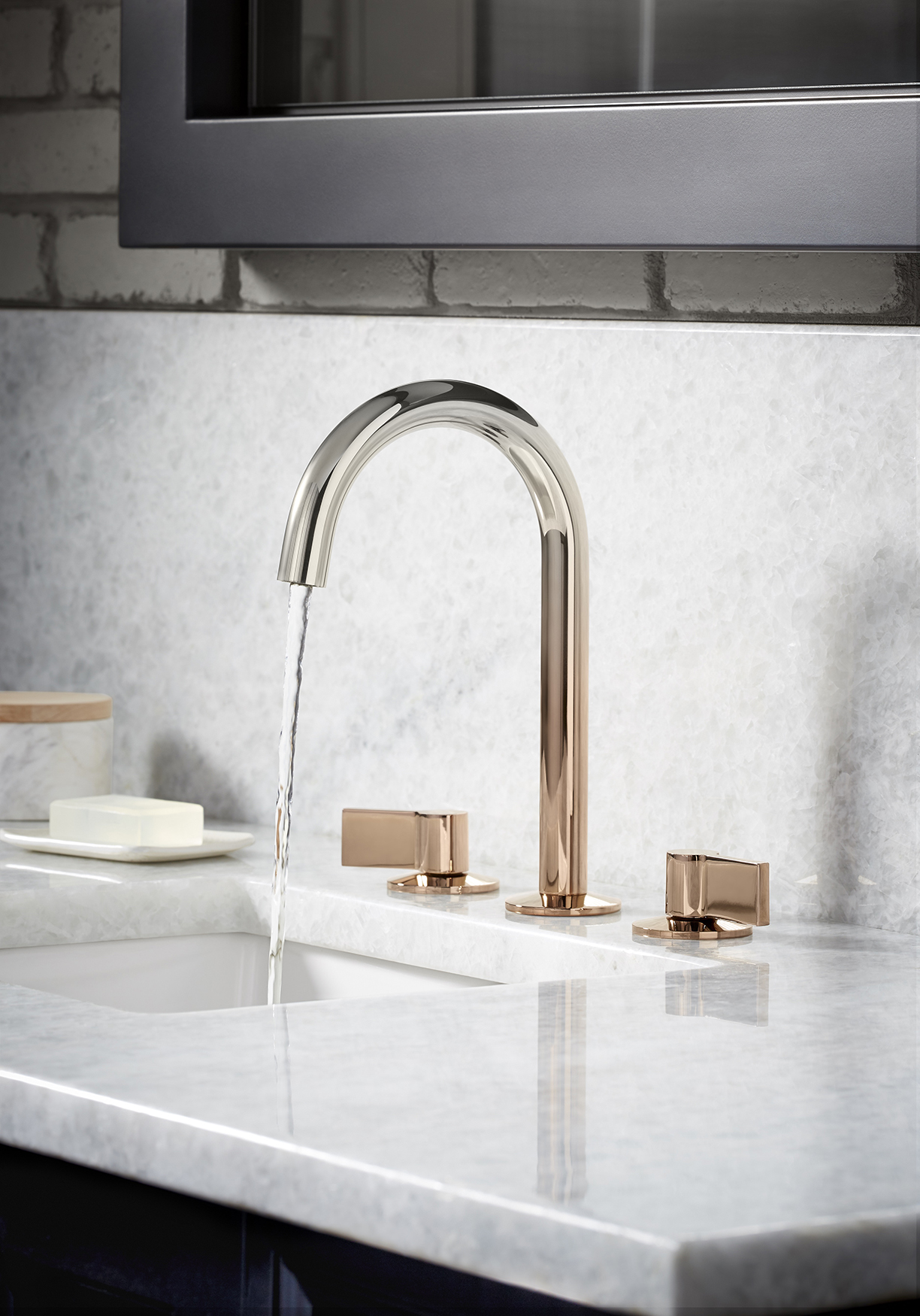
The Ombré Vibrant finish makes use of Kohler’s proprietary physical vapor deposition process, which bonds the finish and faucet together at the molecular level, to create an incredibly strong surface that is both scratch- and tarnish-resistant. The finish comes in two fabrications: Vibrant Rose Gold to Vibrant Polished Nickel, and Vibrant Titanium to Vibrant Rose Gold.
The Ombré Vibrant finish is available on a curated selection of Kohler plumbing products: Components and Sensate. Homeowners can express their personal taste by using faucets with this finish as an integral design component for their home décor.
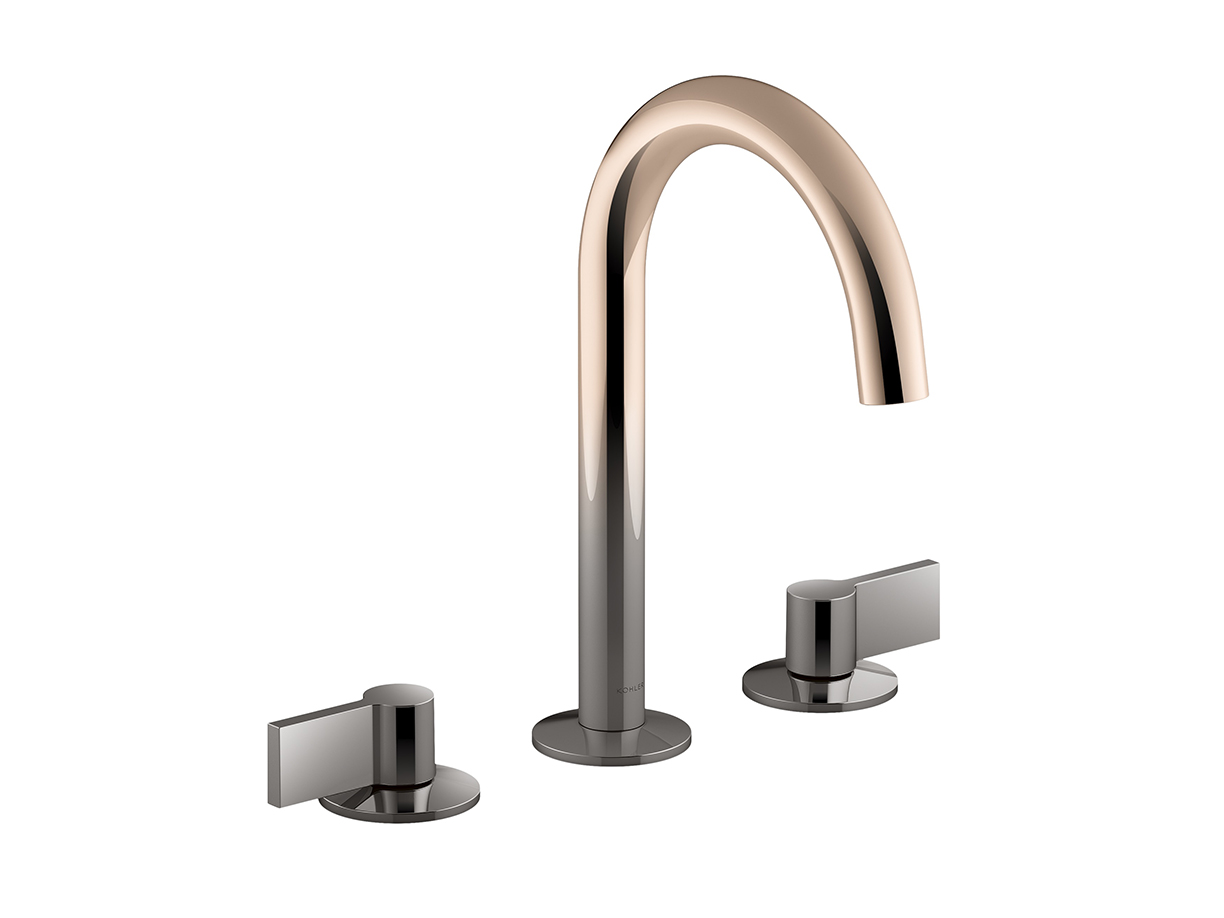
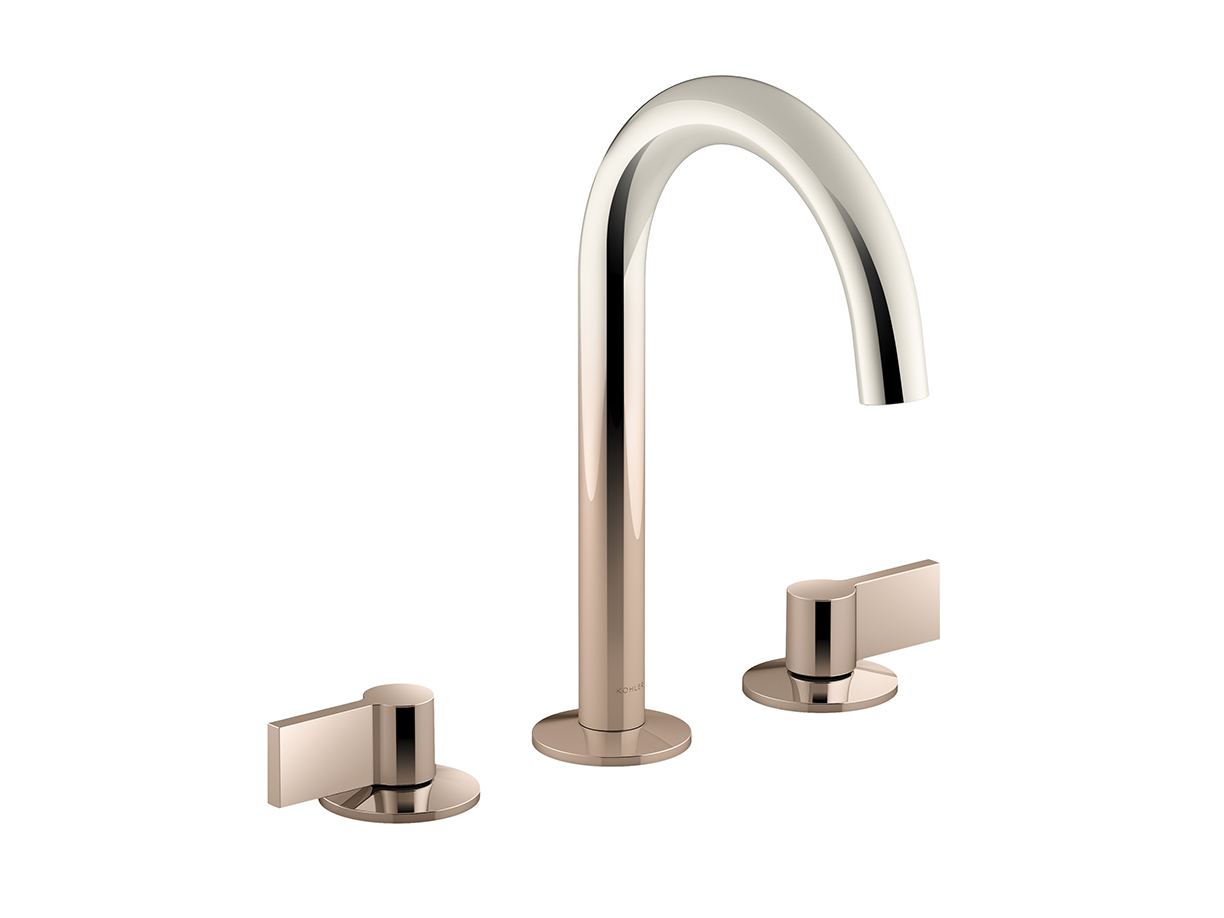
The word ombré, French for shadow or shade, has been seen on everything from haute couture gowns to celebrity hairstyles, and its ingenious use on what could be seen as an everyday product further establishes Kohler as the industry leader in finish innovation.
Photos courtesy of Jillian Rosone.
Artist and inventor Bandana Jain works with recycled and eco-friendly materials to create one-of-a-kind artwork for the home.
Sharing a deep concern for the environment, the contemporary artist has been creating artwork using corrugated cardboard for the last seven years. She crafts unique furniture for clients — from couches and desks to tables and lamps.
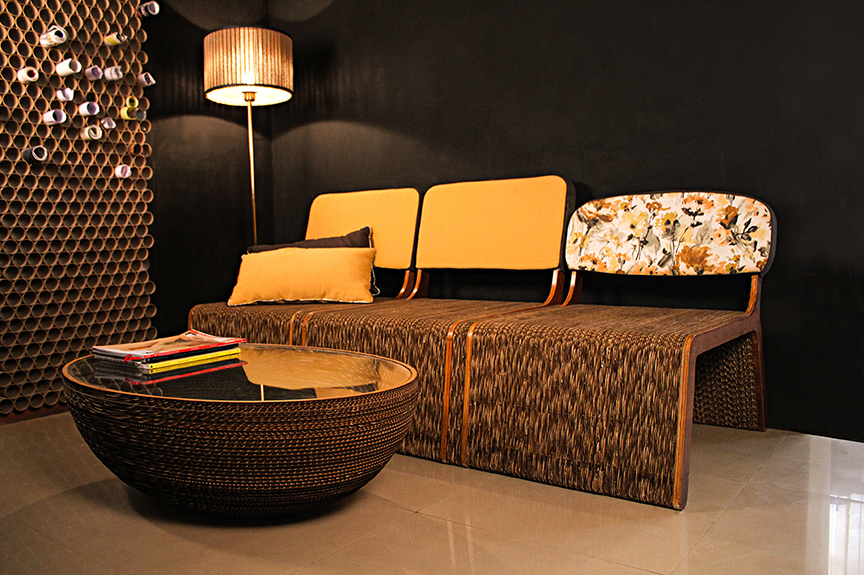
She is also the founder of Sylvn Studio, a business dedicated to conserving the environment. The India-based business is the country’s only design label specialized in hand-crafted décor products made of recycled corrugated cardboard.
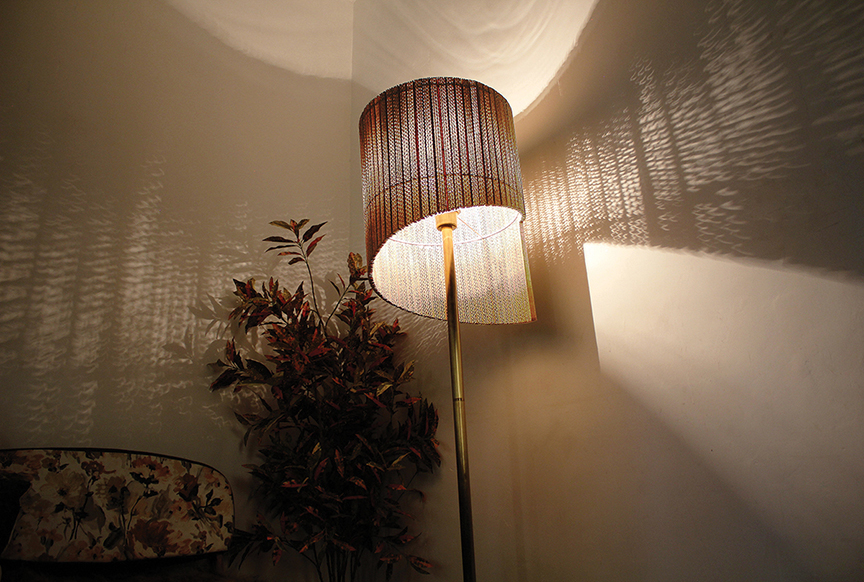
How did you first begin your work with cardboard? Why did you choose this medium?
Initially, I worked with a few other mediums. To choose cardboard as a signature medium was a conscious decision I had taken because I wanted to offer something different. Also I wanted to educate people about adopting sustainable lifestyle.
How has your journey with this medium shifted in the last seven years?
It only grew with time. Corrugated cardboard is certainly not an easy medium to work with. I struggled a lot and over time I gathered experience and maturity to handle this medium. I must say nobody can touch me now.
Why is it important that designers/artists use recycled and eco-friendly mediums and that homeowners choose to purchase these types of artwork?
We are all the children of the earth. The existence of our being is intrinsically connected to nature. As responsible humans, it is for us to ensure that we build a better place for ourselves and subsequent generations to come. This can happen only when we make the right choice.
Why should homeowners incorporate these pieces into their homes?
A well-designed interior accessory revs up the design quotient of your abode. And every accessory in a home is akin to an individual chapter in the overall design narrative. It defines the space and tends to be a conversation starter because of its exclusivity and aesthetics. Who doesn’t want to be talked about?
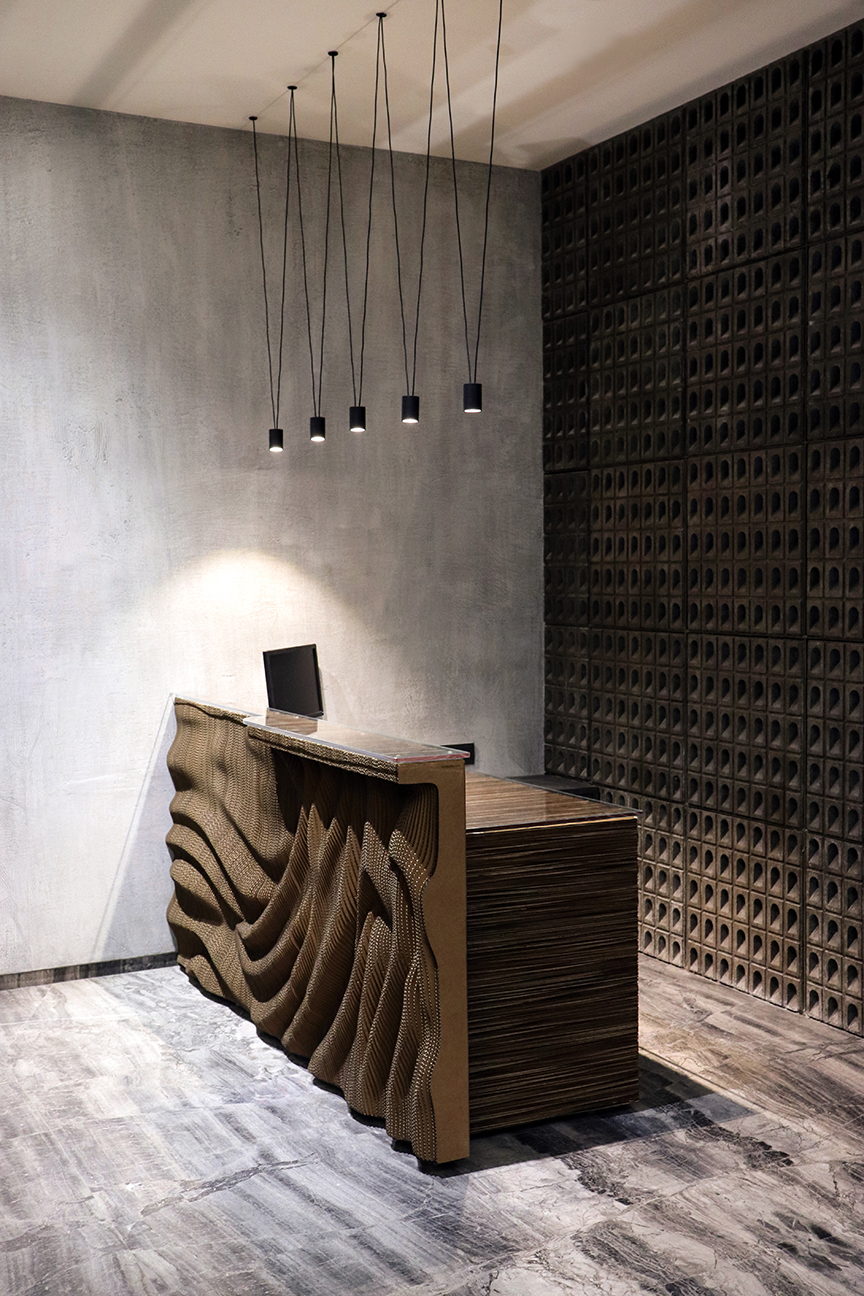
Where do you gather inspiration for your creations?
Inspiration comes to me from a myriad of spaces. As an artist, my observations and experiences guide me. My choice of medium is also a part of my experience. Once I was in Zermatt where I had the chance to explore the Eco Village; the determination of the locals to keep the town sustainable inspired me a great deal.
Photos courtesy of Bandana Jain
Offering a one-stop shop for high-end design — architecture, landscape architecture and interior design services under a single roof on Los Angeles’ famed Miracle Mile — is Studio William Hefner.
The office’s location on this stretch of Wilshire Boulevard, lined by Art Deco masterpieces and many of the city’s museums, is clearly inspirational for designers.
Originally from Northern California, Hefner arrived in Los Angeles to earn a graduate degree in architecture from UCLA and founded his current practice in 1989. He oversees a highly collaborative staff of about 35 in L.A. and maintains a smaller office in the idyllic coastal community of Montecito, outside of Santa Barbara.
Hefner, who studied art history in college and appreciates a diversity of design, draws inspiration from landmark residences scattered throughout Southern California. He is appreciative of traditionalists like Wallace Neff and Paul Williams — their Mediterranean estates have long been popular with Hollywood celebrities — as well as Mid-Century Modern masters Rudolph Schindler and Richard Neutra. As a result, Hefner’s practice encompasses a wide spectrum of architectural styles and his firm adapts to evolving preferences.
“In my practice, I try not to have a ‘signature’ style but strive toward quality design and execution in different genres, from very traditional to contemporary,” says Hefner, who reports about 60 percent of his current commissions are modern, a share that has doubled in the past decade. “Modern residential architecture has come in and out of style over the past 30 years but is finally becoming more of a lifestyle, not just a fashion or trend,” says Hefner, who adds, “I think it’s here to stay.” In Los Angeles — where so many high-end homes are in the hills or along the coast — modern design maximizes views and suits the region’s indoor-outdoor lifestyle.
Commissioned to design a massive residence on 10 precious acres in L.A.’s opulent Bel-Air neighborhood, Hefner created a formidable French-style estate known as Château des Fleurs. The client’s original inspiration was the majestic Hôtel du Cap on France’s Côte d’Azur, and Hefner conducted extensive research in Paris, Versailles and the Loire Valley to ensure that every detail was authentic. “We wanted to make sure each room was special and unique,” explains Hefner of the house, which has 31 bathrooms. Despite the scale of the project, the architect took care to create intimate, family-friendly spaces throughout the home in addition to grand rooms for entertainment.
When the 60,000-square-foot residence was completed in 2013 after five years of construction, it was the largest home in a city famous for conspicuous consumption. In his lavishly illustrated book Château des Fleurs (Pointed Leaf Press, 2016), Hefner explains a progressive approach to classic French design. “The balance of this house was to create a powerfully simple structure that would feel timeless and not imitative, while inviting an Old World opulence to the fit and finish of the architecture in a way that would be both decorative and something more: modern,” he writes.

Another more classically inspired design from Hefner is an oceanfront home in L.A.’s Pacific Palisades, a celebrity-favored enclave with a rich architectural history. This home features an Italianate design, dazzling spiral staircase and lush landscaping. In the very same community, in the foothills of the Santa Monica Mountains, Hefner authored a sprawling modern residence in which the floorplan was meticulously oriented to ensure optimal views from every room.
An approximately 7,000-square-foot home in Beverly Hills’ coveted Trousdale Estates is one of Studio William Hefner’s most notable expressions of modernism. Reminiscent of L.A.’s influential Case Study Houses from prominent Mid-Century Modern architects, it was commissioned for a client with an extraordinary modern art collection. “Accommodating art is always a challenge in a view house,” says Hefner, who notes the requisite expanses of glass tend to limit available wall space.
In suburban Sierra Madre, a considerably more rustic community than Beverly Hills, Hefner created a thoroughly contemporary residence in an environment where Craftsman bungalows and Spanish Revival homes are the prevailing architecture. But through a generous use of stone and wood, he was able to infuse the property with considerable warmth, softening the impact of its modernist theme.
“My philosophy, in both traditional and modern homes, is to introduce spaces for indoor-outdoor living, which is a reason we offer landscape architecture among our services,” says Hefner. “In Southern California, the entire site becomes a living space, with large patios, covered outdoor living areas and landscaped courtyards that people can use throughout the year,” he explains. In Hefner-designed landscape design projects, swimming pools often double as reflecting pools, fountain-laden patios assume the serenity of Zen gardens and cacti provide a compelling complement to austere clean-lined structures.

Like New York’s idiosyncratic Peter Marino, a talent he admires, Hefner is an architect who has expanded his practice to incorporate interior design. “I always had a strong interest in interiors and was disappointed when some of my early projects were not finished the way I had envisioned them, so I began designing interiors myself,” recounts Hefner. Now heading up the interior specialty at the firm is his wife, accomplished designer Kazuko Hoshino, and the firm produces custom-made furniture and accessories that enhance the interiors she creates.
Among Studio William Hefner’s custom-made products are the Infinity console, a plane of wood supported by two circular bands of steel, and the strikingly contemporary Halo mirror with its echoes of Mid-Century Modernism. Featuring a modern simplicity are the Capri lounge chair and distinctive Willow nightstand. Even the most contemporary of these pieces can complement vintage architectural settings, as Hefner and Hoshino have demonstrated in their own 1920s residence in L.A.’s fashionable Hancock Park neighborhood.

Before Hefner founded his own company, he worked for Skidmore Owings & Merrill, one of the world’s largest and most influential architecture firms, designing high-rise commercial buildings. “It was difficult to establish a personal connection with the ultimate users of the spaces,” laments Hefner, who appreciates residential design because of the more intimate relationship it forges between architect and client. Hefner encourages clients to fully participate in the design process, stating, “I think we do a better job when they’re more involved.”
The firm’s projects continue to be concentrated in Southern California, where Hefner believes the Mediterranean climate and the indoor-outdoor lifestyle it encourages affords him a genuine freedom of creativity. However, Studio William Hefner has designed residences in countries as disparate as South Korea, Turkey and Israel, and is currently undertaking projects in Seattle, the San Francisco Bay Area and Jackson Hole, Wyoming.
Photos courtesy of Laura Hull, James Ray Spahn, and Tyler William Parker
This property originally appeared in the Spring 2017 Edition of Homes & Estates Magazine.
In the fastest growing beach community on Grand Cayman, Frank Sound, this contemporary beach villa sits on 124 feet of secluded reef-protected beach with lots of fruit trees and flowering shrubs. Oceanus Villa boasts 11,190 square feet with remarkable heavy-duty construction on a 12-foot elevation. “The owner is an engineer and you can almost feel the 12” poured concrete walls and the 70+ augured pilings which anchor the home to bedrock,” says listing agent JC Calhoun of Coldwell Banker Cayman Islands Realty. Listed for $5.995 million, the home features 5 bedrooms, 7 baths fine fixtures, fittings and equipment, an open plan with high ceilings and lots of glass on 4 levels. “Contemporary, solid and spacious are the words which come to mind when I think of Villa Oceanus,” says Calhoun. “The design is so clean that we actually flew the drone inside the house while making the video.”
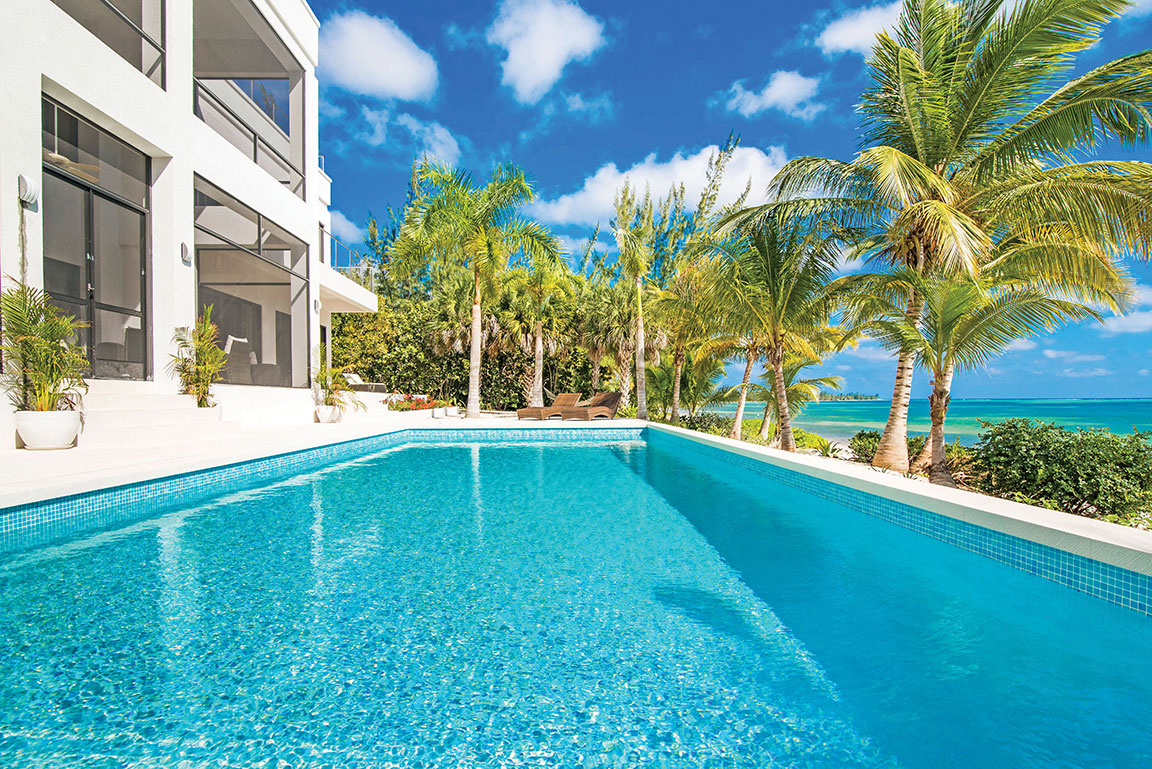
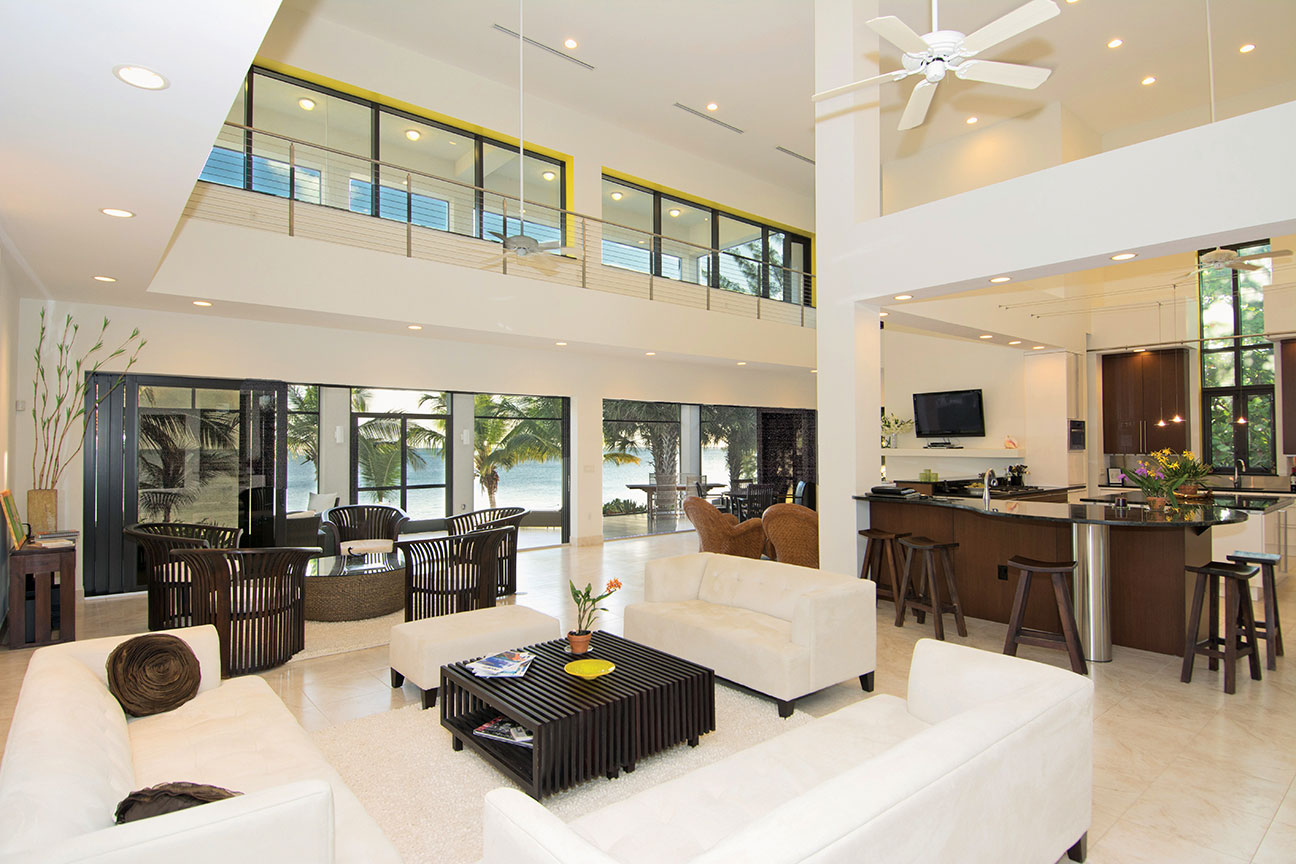
For more information, visit www.coldwellbankercayman.com.
Agent Information: JC Calhoun | jc@cirealty.ky | T. 345.945.4411 | Coldwell Banker Cayman Islands Realty















